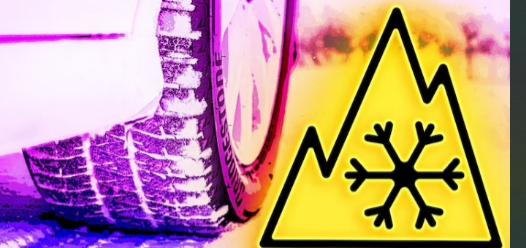
We understand why some Rated Tires individuals may hesitate to invest in dedicated winter tires, despite the fact that many all-season tires are not ideal for snowy conditions. While winter-specific tires like Bridgestone Blizzaks and Nokian Hakkapeliittas offer superior performance in snowy, slick, and icy conditions, the associated costs, storage requirements, and the hassle of biannual tire swaps can be legitimate deterrents for consumers.
Rated Tires
This is the reason why approximately 90 percent of the U.S. tire market is dominated by all-season tires, although only a select few of them earn the privilege of displaying a three-peak mountain snowflake (3PMSF) symbol on their sidewall. These tires strive to strike a balance, offering a compound that doesn’t wear too quickly or generate excessive road noise in warm weather while ensuring safety during challenging winter conditions.
However, it’s essential to recognize that not all snowflake-rated tires deliver the same level of performance, and it all boils down to how the tire rating is determined, which is simpler than one might assume.
When a prototype tire undergoes evaluation for a 3PMSF rating, it undergoes the American Society for Testing and Materials F1805 test. In this test, the tire must outperform a standard reference test tire (SRTT) that serves as an industry-wide benchmark. The evaluated tire is mounted on a trailer loaded with weight to simulate the mass and traction of a vehicle, and it is then rotated on a standardized medium-packed snow surface. The test focuses on accelerative traction, requiring the tire to measure 10 percent better than the SRTT.
The evaluation solely measures accelerative longitudinal grip and does not include a road test, cornering evaluation, or assessment of braking distance. Consequently, every 3PMSF-rated tire ensures a minimum level of traction on a specific surface to facilitate starting from a stop or maintaining momentum on a steep, snowy driveway. However, without testing for braking, lateral grip, or ice driving, one set of tires may excel in cornering while another might struggle to provide the same level of control.
To illustrate this, we conducted a back-to-back comparison of Bridgestone’s WeatherPeak rubber and Michelin’s CrossClimate 2—each manufacturer’s top snowflake-branded all-season tire. The test was conducted using identical 18-inch wheels on all-wheel-drive Toyota Camrys on Bridgestone’s winter driving school track featuring slick packed snow and ice. Both sets of tires exhibited similar accelerative and braking performance, but the Bridgestone rubber offered slightly more confidence and traction during cornering.
While this specific experience does not cover aspects such as dry-weather grip, ride quality, durability, or road noise, and it was conducted on Bridgestone’s home turf, it serves as an informative illustration that not all 3PMSF-rated tires are created equal. As with any significant purchase, thorough research is essential (we recommend Tire Rack as a valuable resource), and it’s advisable not to compromise on quality. The wise advice to invest in everything that connects you to the ground—your shoes, mattress, and tires—holds true.